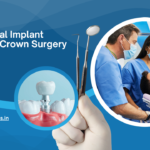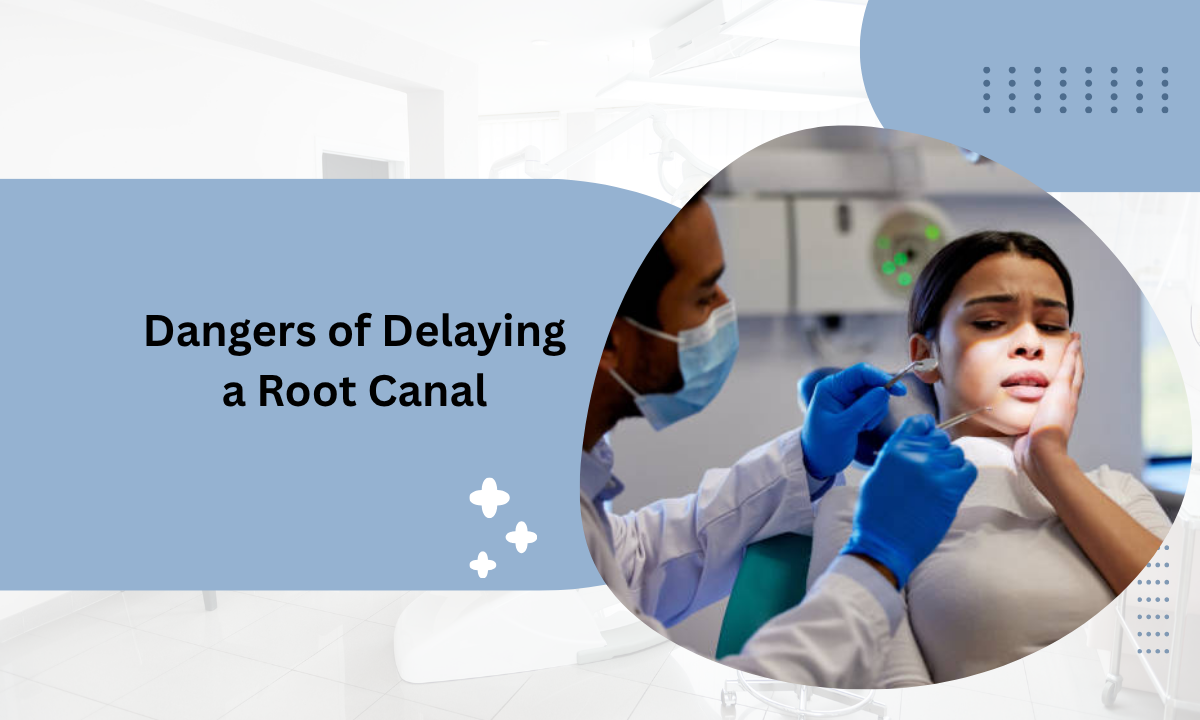As a practicing dentist at DDC Smiles, I often meet patients who hesitate or delay getting a root canal procedure, usually because they’re anxious about pain or unsure about its urgency.
But here’s what I always tell my patients: a root canal isn’t something to fear; it’s a treatment that saves your natural tooth and prevents bigger oral health issues down the line.
At DDC Smiles, we provide Root Canal Treatment (RCT) in Koramangala and HSR Layout, designed to be comfortable, precise, and efficient. Our goal is to help you relieve pain, control infection, and protect your natural smile with minimal discomfort and downtime.
In this blog, I will guide you through what happens when you delay a root canal, the associated risks, key symptoms to watch for, and why acting promptly can make all the difference.
Root Canal Meaning
Before diving into risks, let me clarify the meaning of ‘root canal’: it is the removal of infected or inflamed pulp (which contains nerve and blood vessels) from inside a tooth. After cleaning, disinfecting, and shaping, we seal the canals with filling material to prevent reinfection. This preserves the tooth structure and prevents extraction.
The Risks Of Delaying A Root Canal
Delaying a root canal isn’t just uncomfortable; it can lead to serious oral and even systemic problems. Below are the key risks I observe in my practice:
1. Worsening Pain And Persistent Discomfort

When infection reaches the pulp, you might feel occasional throbbing or sensitivity. But if you postpone treatment, that intermittent pain often becomes constant. You might experience intense, sharp, or radiating pain when biting or with temperature changes. Many patients tell me it disrupts sleep and daily life.
2. Infection Spread Beyond The Tooth
The infection in the pulp doesn’t always stay contained. Bacteria can travel beyond the root, invading adjacent teeth, gums, and surrounding bone. In severe cases, it can even enter soft tissues, causing abscesses (pockets of pus). In some extreme instances, if left untreated, the infection can enter the bloodstream and contribute to systemic complications.
3. Formation Of Abscesses And Swelling
As bacteria proliferate, pus may build up at the root tip (periapical abscess). This results in swelling, tenderness, and sometimes fever. You might notice a pimple-like bump on your gums. Swelling can extend into the face, neck, or jaw, making eating, speaking, or even breathing difficult in extreme cases.
4. Bone Loss Around The Tooth
Chronic infection near the root gradually erodes the bone that supports the tooth. Over time, the bone loses density and structure. Once significant bone loss occurs, even a later root canal may not suffice; the tooth becomes unsalvageable.
5. Tooth Becomes Brittle & Fracture Risk
Without the inner pulp, the tooth loses nourishment and becomes more fragile. The enamel and dentin rely on structures inside for resilience. Delays make teeth more prone to cracks or fractures, especially under biting or chewing forces.
6. Loss Of Tooth / Extraction
If damage becomes too severe, the only option may be extraction. Once a tooth is lost, you may need a bridge, implant, or partial denture to restore function and aesthetics, more invasive, costly procedures.
7. More Complex, Costly Treatment
As the infection advances, treatment becomes more involved. We may need to do surgical intervention (apicoectomy), incision and drainage of abscess, bone grafting, retreatment, or extraction plus prosthetics. These increase cost, treatment time, and risk.
8. Impact On Adjacent Teeth And Overall Oral Health
An infected tooth is not an island. The bacteria and inflammation can affect neighboring teeth, gums, and jaws. Other teeth might get compromised, gum disease may worsen, or your bite alignment may shift.
9. Potential Systemic Health Risks
While rare, there is evidence that untreated dental infections may contribute to systemic inflammation and, in extreme cases, can increase the risk to heart health or other organs in immunocompromised individuals. The mouth is a gateway to the body; infections here matter.
Root Canal Treatment In Bangalore: Local Clinics And Options
The root canal cost in Bangalore typically varies depending on complexity, tooth location, and clinic reputation.
In busy corridors like Koramangala and HSR Layout, you’ll find many qualified clinics. At DDC Smiles, located in Koramangala / HSR region, we also provide Root Canal Treatment (RCT) in Koramangala and HSR Layout, tailored to your needs with uniform pricing and quality. (You can check our price list online.)
Why Timely Intervention Pays Off
Delaying a root canal procedure is not a wise decision because every day you wait magnifies risks. When you let me, at DDC Smiles, treat the tooth early:
- The procedure is simpler, often done in one or two sessions.
- Pain and infection are controlled before they spread.
- You preserve bone and prevent further damage.
- You avoid extraction and prosthetic needs.
- Overall cost is lower because the complexity is less.
In my experience, patients who wait longer often end up with more appointments, surgical impacts, or the need for implants, turning a treatable root canal into a full oral rehabilitation.
Final Thoughts
At DDC Smiles, we view the root canal procedure not as a painful ordeal but as a critical intervention to protect your natural tooth and overall health. Delaying it is seldom neutral. As your dentist, I strongly advise against putting it off.
In conclusion:
- A root canal means to remove infected pulp and save the tooth.
- Postponing it magnifies risks, pain, abscess, bone loss, tooth loss, spread of infection, and systemic exposure.
- As a practice serving Koramangala and HSR Layout, we are committed to performing root canal treatment (RCT) in Koramangala and HSR Layout reliably, transparently, and with care.
- We guide you through the root canal treatment procedure, explain the tooth root canal process, and clarify the root canal treatment cost.
We see many patients come in after waiting too long.
FAQs
Q: Can I Delay Root Canal Treatment?
A: You can delay, but it’s risky. The longer you wait, the worse the outcomes get, pain intensifies, infection spreads, and saving the tooth becomes harder or impossible.
Q: What Happens If I Skip A Root Canal?
A: The infection persists or worsens. Eventually, the tooth may die, an abscess or bone destruction may occur, and extraction becomes likely.
Q: Is It Safe To Wait A Month For A Root Canal?
A: Waiting a month is risky, especially if symptoms like pain, swelling, or sensitivity are present. Some teeth can tolerate delays briefly, but many worsen during that time.
Q: What Happens When You Prolong A Root Canal?
A: Prolonging can lead to abscess formation, bone loss, spread to adjacent teeth or tissues, fracture risk, and eventual loss of the tooth.




